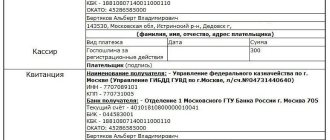What is temporary import of goods?
The customs procedure for importing foreign goods into Russia for a limited permitted period is called temporary import of goods (admission). The advantages of this regime include significant savings in the cost of taxes and duties, which are either absent or the amount of which is lower compared to other regimes. An important condition is the export of such goods in full from the territory of Russia after the expiration of the permitted period. Typically, this provision of the Customs Code applies to exhibition exhibits, structures for organizing fairs, sports equipment, equipment that is used to organize competitions, concerts, etc. Also, the regime applies to foreign cargo that moves across the border of the Russian Federation or is located on storage under customs control.
To confirm the possibility of applying the temporary admission procedure, identification of goods is carried out, which does not take into account containers and packaging. It is important that throughout the entire period of stay, the imported goods remain in their original condition (natural wear and tear is allowed) and at the disposal of the declarant. Such goods can be transferred to third parties only after obtaining the appropriate permission.
Attention! If the goods are not exported within the specified period, then the procedure for release for domestic consumption is applied, which results in the payment of taxes and duties from which it was exempted and a late payment penalty.
In what case can the procedure for temporary import of goods be suspended?
- If, in connection with the requirements of the legal authority of the Russian Federation, the need arises for confiscation of goods.
- According to paragraph 3 of Art. 230 of the Labor Code of the Customs Union, temporary imported goods were removed from the warehouse.
- At the request of an entity that has the right to import goods that are partially taxed, place them under another customs regime of temporary import.
As for the second described case of a possible suspension of the procedure for the temporary import of goods, it is worth adding that there is some kind of legislative error here, because this kind of placement of goods in a warehouse is impossible without having a certain document on them. It follows from this that, by and large, the second case is the third, that is, the goods are placed under other customs operations without the possibility of free circulation.
Such an error in the future can lead to a negative outcome, because throughout the entire period of suspension of the customs procedure for the temporary import of goods, the subject does not pay anything, and this entire period is not counted in the total time of the procedure.
According to the above-mentioned order of the State Customs Committee of the Russian Federation dated December 4, 2003, in order for a subject to be able to temporarily terminate the customs procedure, it is necessary to provide, along with the cargo customs declaration, an application for this. If he doesn't have one, it will be a sign that instead of temporarily suspending the procedure, it should be closed completely.
According to the Customs Union, after the period of temporary suspension of the customs procedure, it is resumed again. A subject who has the right to temporarily import goods should not forget about this, because in this case he will need to start paying customs taxes.
When this procedure begins again, no fees or interest are paid for its temporary termination.
Features of temporary import
The temporary import procedure is completed based on the identification of the goods being transported. The declarant collects and submits to the customs authorities documents detailing the reasons for temporary admission, and documents guaranteeing subsequent re-export. Customs payments are being calculated.
During the use of temporarily imported goods, wear or natural loss is allowed, which cannot be avoided. It is mandatory to comply with proper storage and operating conditions for such goods that can be tested, inspected, tested, take part in experiments, be repaired (functional improvements in design compared to the original are prohibited), and receive technical maintenance. They must always be in the ownership and disposal of the declarant, who can transfer temporarily imported goods to another person in a number of cases defined by law, without notifying the TO, for example, to carry out repair work or maintenance. The transfer of such goods to other persons, not provided for by legislative acts, must be accompanied by a maintenance permit, which is issued on the basis of a written application by the declarant describing the reason for such need and providing information about the owner or user. At the same time, the declarant must comply with the law regarding conditions and terms and comply with all provisions.
Important! The temporary import procedure can only be applied to foreign goods.
Customs clearance of temporary import of goods
offers brokerage services, including customs clearance of temporary import of goods arriving in Russia by air through the international airports of Moscow and St. Petersburg. We will help you declare cargo for temporary export from the Russian Federation at the customs posts of the Moscow air hub, in Pulkovo, including the registration of CARNET ATA.
Regular offices operate in Sheremetyevo, Domodedovo, Vnukovo, Pulkovo.
Customs clearance of temporary import/export: rules and nuances
Temporary import (admission) is a customs procedure under which goods can be placed provided:
- the possibility of unambiguous identification of objects of declaration (except for returnable packaging);
- the purposes of moving cargo across the border are known and understandable;
- the planned stay of products in Russia is limited (up to 2 years);
- guarantees have been provided/security has been provided for (payment of) customs duties;
- undertake obligations to export imported goods outside the Russian Federation (with registration of re-export).
Subject to compliance with the rules, the owner of temporarily imported cargo is relieved partially or completely from the obligation to pay taxes and duties.
The following cannot be the subject of temporary import or export:
- products with a limited shelf life, food, consumables - except for demonstration samples within the framework of exhibition events;
- industrial waste;
- goods prohibited for movement across the border of the Russian Federation in any direction.
Customs procedure codes:
- temporary import - IM 53
- temporary export - EC 23
Use and disposal of temporarily imported goods
Objects of temporary import, according to Art. 222 TC EAEU:
- are in the possession, use and responsibility of the declarant;
- must be preserved in an unalterable condition (adjusted for natural wear and tear);
- are used for their intended purpose (specified in the application and declaration);
- it is allowed to carry out maintenance and minor repairs (without modernization, major changes);
- may be the subject of research and testing;
- can be transferred to other persons: with a simple notification to customs - if they are returnable packaging, or for repair and maintenance, storage, transportation, testing;
- with the permission of the customs authority - in other cases, with an explanation of the reason and necessity.
Temporarily imported transport can be used for its intended purpose (for transportation) both on the territory of the Russian Federation and abroad.
What goods are eligible for temporary admission?
The following goods of foreign origin imported into the territory of the Russian Federation are placed under the customs procedure of temporary import:
- demonstration structures, professional tools, installation equipment to ensure participation in exhibitions, fairs, conferences, competitions;
- musical instruments and theatrical props for concerts and performances;
- mobile gadgets, computers and devices used for business activities;
- equipment necessary for the operation of the media, subject to permission;
- vehicles intended for the above purposes;
- packaging, containers, containers.
What documents are needed for temporary import?
The composition of the package of documents for submission to the TO is determined by order of the Federal Customs Service of Russia dated April 25, 2007 No. 536 and includes:
- documentary evidence of the purposes of admission;
- description of the use of temporarily imported goods with a plan of activities, such as scientific tests, fairs, etc.;
- document identifying the goods;
- a certificate of temporary admission of the non-taxable type with reference to a regulatory act allowing the abolition of taxation;
- documentary guarantees of re-export of goods within the established time limits;
- a statement indicating the time of return removal.
If the cargo was or is under other customs procedures before this regime, the declarant must confirm that all applicable requirements are met without violations. The customs broker may require additional documents.
Terms of temporary import of goods
The general conditions are that the maximum period of stay of temporarily imported goods in the Russian Federation is two years. The period of storage in a customs warehouse may be excluded from the calculation.
The period for temporary import of goods is determined by the Russian Customs Service, taking into account the declared purposes for which the goods are imported into the territory of the Russian Federation. In general cases, the countdown begins from the day the regime opens. An extension period is provided for various categories of goods and depending on the purpose of their import into the territory of the EAEU. This provision does not apply to containers, but is valid for fixed production assets, provided that they are the property of the declarant. Thus, equipment can be under the temporary import procedure for 34 months. The Russian Customs Code describes the procedure for extending the deadline. If the temporary import regime was issued by different declarants, the permitted period still does not exceed two years. The TO has the right to set a shorter period based on current legislation and the characteristics of the cargo.
Temporary import period
The validity period of the temporary import procedure is, according to the EAEU Labor Code, 2 years, with the exception of goods included in the list established by law. Personal vehicles of individuals can be imported for 12 months. The declared import period can be extended if necessary.
How to extend temporary import? Almost any customs office can extend the period of permission to use foreign goods; however, it is preferable to the department where it was opened and in which the customs declaration was registered. It is more difficult with ATA Carnets, since they can only be extended at specialized customs posts. In Moscow, the extension of ATA Carnets is carried out by the Exhibition Post of the Moscow Customs.
| t/p Exhibition | |
| OTO and TC No. 1 code 10129010 | Moscow, Krasnopresnenskaya embankment, 14, building 2 (Krasnaya Presnya exhibition complex, pavilion No. 2) |
| OTO and TC No. 2 code 10129010 | Moscow, Prospekt Mira, 119, building 170 |
| OTO and TC No. 3 code 10129013 | Moscow region, Krasnogorsk district, Krasnogorsk, st. Mezhdunarodnaya, 16 |
Procedure for payment of customs duties and taxes during temporary import
The temporary import regime provides for complete or partial exemption from taxes and duties. Among the goods that are not subject to tax:
- cargo related to science, culture, film industry, tourism, imported for the purpose of improving international relations;
- international aid goods, etc.
The final decision on full tax exemption rests with the federal government. If the conditions of the procedure with exemption from mandatory payments in relation to declared temporarily imported goods are violated, or new goods are imported that are not specified in the declaration, then the full amount of tax payments is charged.
Under a regime with partial payment of taxes and duties, obligations to pay arise after the opening of the regime and end when it ends. The payment date is determined by the date of registration of the customs declaration or, if the goods were released before registration, by the date of registration of the application for the release of goods.
The payment deadline is considered the day of expiration of the temporary import of goods or depends on the circumstances, for example, if the temporarily imported goods were transferred to other persons, then the payment deadline is the day of their transfer or the day of registration of the declaration at the customs office. If temporarily imported goods are lost during the regime, the payment deadline is the day the goods were lost and the day the customs declaration was registered by the customs authority, if the day of loss is not determined. The exception is complete destruction as a result of objective reasons.
The amount of customs duties and taxes is 3% of the same duties and taxes that would be charged on the same goods when imported for domestic use. The amount can be paid immediately in its entirety or in installments periodically, but not less than one payment per three months. Periodic payment is discussed between the declarant and the authorized representative of the customs service. Paid taxes and customs duties cannot be returned or compensated as a result of offset of payments.
Important! It is legally determined that customs has the right to demand payment of customs duties if its employees have doubts regarding the fulfillment of obligations on the part of the declarant.
Duties and other payments for temporary import
There are 2 schemes for paying customs duties and duties for temporary import: with partial payment and complete exemption from payment.
Complete duty exemption
Goods that are completely exempt from customs duties and duties for temporary import are indicated in the decision of the Customs Union Commission “On approval of the list of goods...” dated June 18, 2010 No. 331. This list is quite extensive and includes several categories, such as packaging and containers, goods for sports, science, culture, goods for international assistance, etc.
Full exemption is possible only for goods imported for a period of no more than 1 year (clause 1 of the above decision).
Partial payment of duty on temporarily imported goods
All other goods not mentioned in the above list are imported not free of charge, but with partial payment of customs duties (clause 1 of Article 223 of the EEC Labor Code). Payment is subject to 3% of the amount that would have to be paid to the declarant when registering the procedure for the free release of goods for domestic consumption for each month of stay in the territory of the Customs Union (clause 3 of Article 223 of the EEC Labor Code).
As part of the temporary import procedure, the customs authority also has the right to require the declarant to make a security payment guaranteeing payment of customs duties, the amount of which is also determined based on the amount of payments payable upon release of goods for domestic consumption (clause 1 of Article 65 of the EEC Labor Code).
How does the temporary importation of goods expire?
If we talk about the general case, the procedure ends two years after the introduction of the regime, which can be suspended for the period of storage of goods in a customs warehouse. The closure of the procedure occurs after the goods are placed under the customs procedure of re-export, under another customs procedure, if the period has not been extended. Also, early termination of the regime may occur as a result of violation of the conditions of temporary import, for example, modernization of goods.
The procedure for suspension and renewal is determined by a special FCS Commission.
When the procedure for temporary import of goods is considered completed
The procedure for temporary import of goods may be completed ahead of time if the goods are subject to some other customs manipulations. The only exception to this is the transit procedure.
The procedure by which temporarily imported goods are exported back is called re-export. It can occur in any territory of the Customs Union, including in countries that are members of the Customs Union. For re-export, it is necessary to provide a customs declaration, which indicates the presence of the goods at a certain customs procedure, an application for the re-export procedure, as well as other documents (according to order of the Federal Customs Service No. 536 of April 25, 2007). In addition, it is necessary to have information about the nuances of the stay of temporary imported goods in the Customs Union. They must be confirmed by a paper with a seal from the authorities of the customs service, which controlled it.
When goods temporarily imported are released for free use, all payments for duties and customs taxes that were paid previously go towards payments for the internal use of goods. In addition, for the entire period of payments of incomplete tax exemption, interest is calculated as if installments were applied to these payments from the first day of this exemption. The exception is the release of temporary imported goods after a period of two years and 10 months with incomplete payment of customs taxes and duties.
Why is temporary import needed?
The temporary import regime helps strengthen foreign economic relations and develop foreign trade, easing the tax burden for declarants who can take part in scientific conferences, hold concerts, and represent domestic industry at international exhibitions.
Everything about marking goods during import. Only with markings is it possible to go through customs clearance of cargo without delays
List of documents required for customs clearance In each case, to cross the border it is necessary to collect a package of documents for customs clearance
Rates for customs duties in 2021 in a convenient table For the convenience of site users, tables have been compiled to make the information easier to perceive. In 2021, previously approved rates continue to apply.










